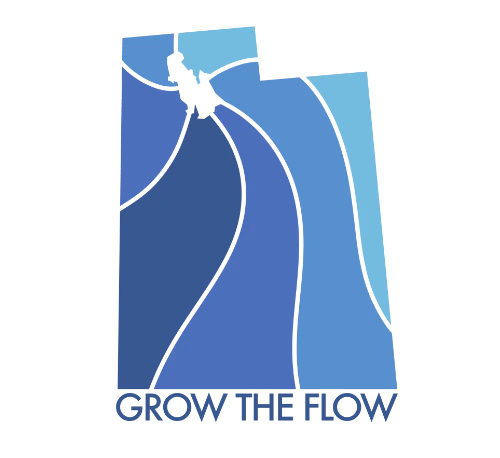Guest Blog Post by Jordan Valley Water Conservancy District
When the topic of Great Salt Lake comes up, it’s common to hear a familiar refrain: “My water use won’t make a difference.” On the surface, that might seem true. One household, one yard, how could that possibly move the needle on a lake that has shrunk by two-thirds?
But let’s put it into context.
The average Utah lawn uses between 2,500 and 5,000 gallons of water each time it’s watered. Over a full irrigation season (roughly 20 weeks) that adds up to more than 150,000 gallons per household. Multiply that by every household along the Wasatch Front, and the cumulative impact becomes clear: it’s not about a single lawn, it’s about thousands of them.
This water use becomes especially important in a state like Utah, where most of the water goes toward outdoor irrigation. Jordan Valley Water has made it a priority to conserve water not only for our community, but for the ecosystems that depend on it, including Great Salt Lake. When customers reduce their water use, we have more flexibility. We can store that water in our reservoirs for future drought years, when conditions allow, we can send some of that excess to support Great Salt Lake. But that flexibility shrinks when demand rises, often because of outdoor watering.
There’s no single fix for water conservation, but landscape changes are among the most impactful steps individuals can take. Replacing turf grass with water-efficient landscaping can reduce outdoor water use by up to 60%. That’s a significant savings. Not just in gallons, but in long-term impact.
If you’re wondering whether those changes are practical or affordable, many areas in Utah offer incentive programs that help offset the cost of converting to waterwise landscaping. These programs vary by location but often include rebates for replacing grass with waterwise landscaping, installing smart irrigation controllers, and converting to drip irrigation.
It’s also important to note that these programs encourage greenery, not gravel. Requirements often include minimum plant coverage (typically around 50%) to reduce heat island effects and ensure that Utah yards remain usable, comfortable, and environmentally beneficial.
We know these changes aren’t always easy. Every household is different. Some people use their lawns for play, others for pets, and some simply for aesthetics. That’s why these programs are designed to be flexible. You don’t have to convert your whole yard. You can start small with a park strip, side yard, or corner you rarely use.
Another easy way to conserve is to skip one watering day each week. Grass is fairly resilient, and cutting back by even one day a week can conserve more than 50,000 gallons per year. That’s water that could remain in our reservoirs or be allocated to environmental uses like Great Salt Lake.
It’s understandable to feel overwhelmed by the scale of the lake’s decline or the complexity of Utah’s water system. But individual actions do matter, especially when multiplied across communities. The idea that “my small change won’t help” is one of the biggest barriers to real progress.
While there’s no one-size-fits-all solution, there is room for everyone to participate at whatever scale is feasible. Conservation isn’t about perfection, it’s about doing what we can, when we can.
If you’re curious about what’s available in your area, check out Slow the Flow or talk to your local water provider. Whether it’s one yard or one fewer watering session, it adds up. And when it comes to a shared resource like water, that’s what makes all the difference.
